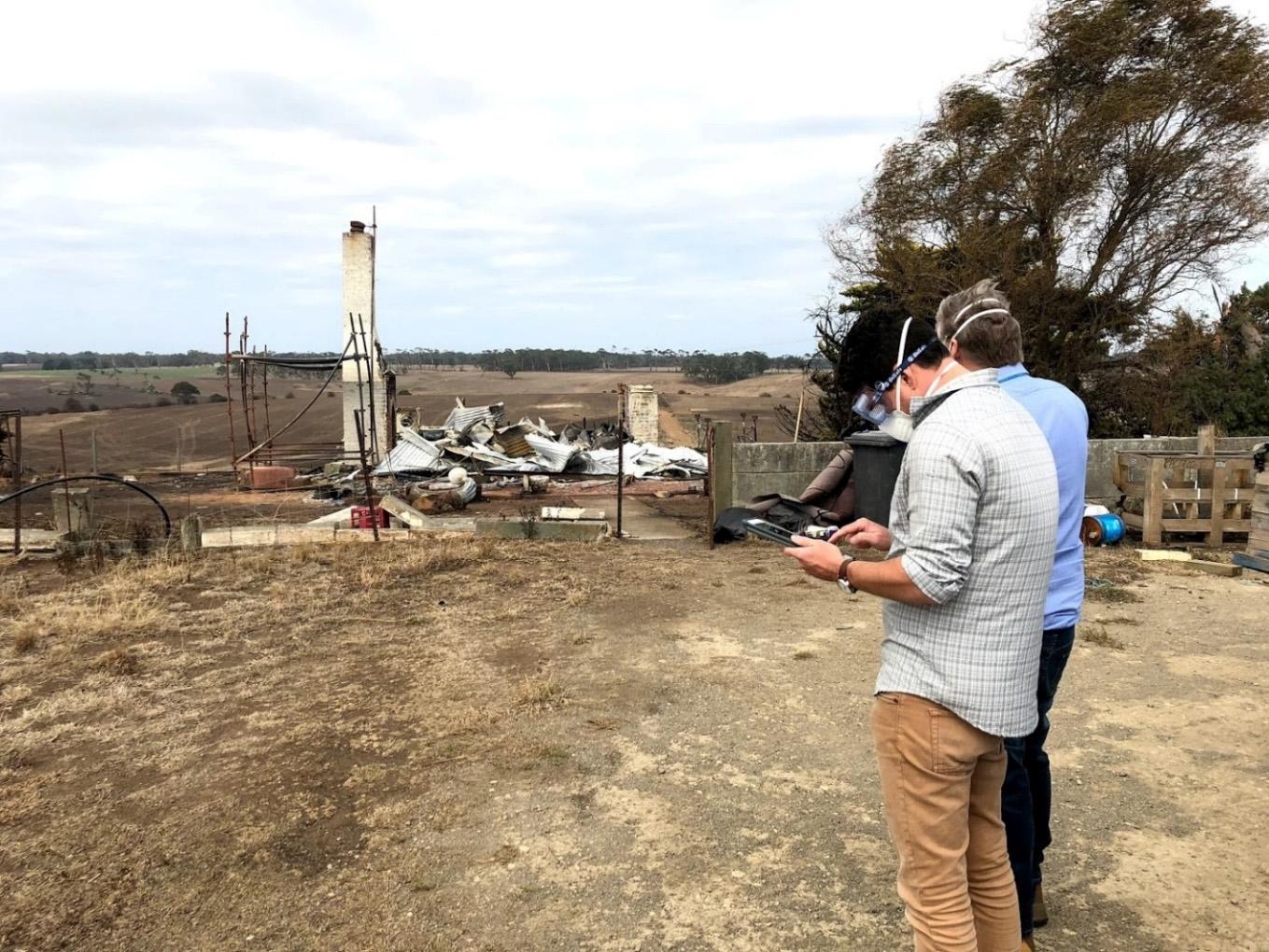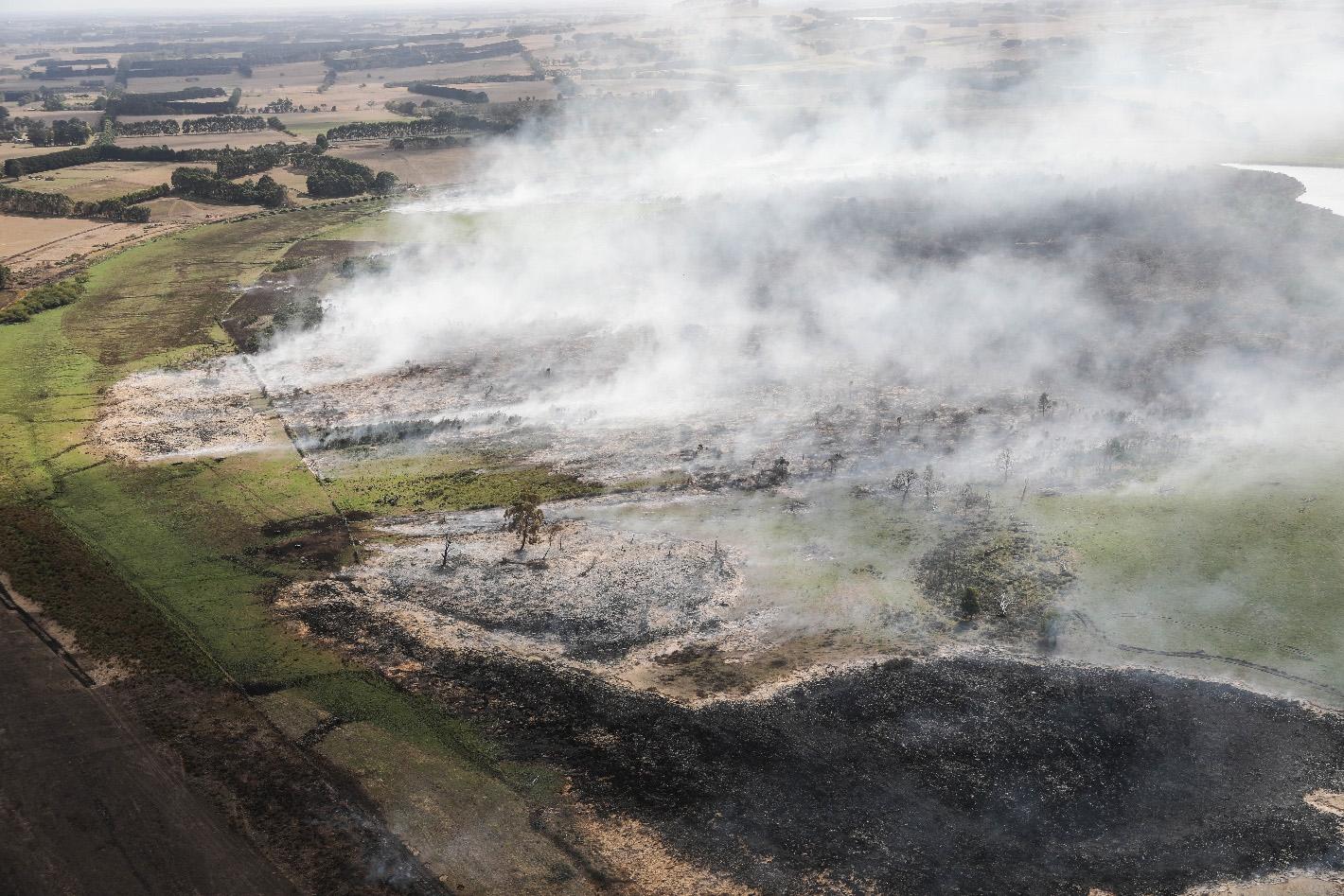
5 minute read
3.5 Impact assessment data collection tools
Finding 9
The Inspector-General for Emergency Management finds that there is significant work being conducted by Emergency Management Victoria to resolve impact assessment data collection, collation, coordination and communication challenges.
EMV are leading the EM-Impact Project that includes an overhaul of common data reporting procedures. The development of a centralised impact assessment portal is ongoing at the time of writing. Previously, organisations shared data through several online and in-person formats. This resulted in a devolved system of impact assessment reporting that took considerable time and resources to collate, and resulted in duplication and inconsistent data sharing across the sector. The centralised portal was originally designed for emergencies escalated to state level but can be used in other levels of escalation.
The development of a centralised, integrated data portal will mitigate many of the issues identified through the course of the review. However, IGEM notes the importance of addressing the findings and recommendations related to clarity of purpose of impact assessment as a priority to guide further development of effective technological solutions.
Stakeholders expressed almost unanimous support for a centralised impact assessment data portal, or a system where data collected by various organisations could be easily accessed in real-time and shared electronically. Queensland has a centralised portal and devices that can be shared across the sector to conduct impact assessment (see Box 5, p.48). Most of the organisations use different data collection and reporting tools which span from paper forms to sophisticated online platforms. Some organisations use platforms that allow them to work collaboratively with similar organisations. For example, the majority of LGAs use CrisisWorks, an online data collection platform which has recently expanded to allow collaboration across LGAs. MFB uses ARM360, Survey123 and has adopted a system called Fulcrum. These technologies are used in other jurisdictions, allowing MFB to work collaboratively across the country and internationally. The online platforms typically shared the following features: location mapping ability image/video upload capacity useable on portable device (for example, tablets, phones and laptops) customisable data entry that can be changed according to emergency management needs. In general, IGEM observed a future-focused approach to technology for impact assessment. Producers of impact assessment data discussed multiple strategies for using technology to improve impact assessment by making it more efficient, safer and accurate. Some of these strategies related to equipment (for example smart devices, new generation satellites and aerial observation systems). Other strategies related to communication and information sharing technology. During the South-West Fires, EMV trialled the updated centralised SIA portal to identify issues with the system. This required some double-handling of data for organisations and the system experienced some technical difficulties that made data reporting cumbersome. EMV facilitated several post-event debriefing activities [77-79]. The debrief which focused on impact assessment [79] identified problems with the trial and the system. Personnel responding to the South-West Fires also raised numerous issues related to the centralised SIA portal through the lessons management system EMV coordinates (EM-Share) which resulted in a lesson being formally drafted (LES0000014).
EMV and the associated working groups for the impact assessment projects have made several adjustments to the portal in preparation for the 2018–19 summer season based on the trial during the South-West Fires and ongoing development activities. One major decision has been to integrate other organisations’ data reporting platforms into the centralised portal. EMV has started to integrate CrisisWorks which will result in key data entered automatically populating the centralised portal. At the time of writing, 19 CrisisWorks metrics had been integrated into the centralised portal. EMV indicated integration across systems will continue to occur. Stakeholders raised concerns with the centralised portal, many of which have been identified by the EMV impact assessment project team. Some of the concerns related to the portal specifically include: limited ability to share information reported within an organisation limited ability to download/export complete or partial data sets unclear methods and metrics of data reporting large amount of data required high degree of technical expertise and/or on the job learning required to report and interpret the data. IGEM notes that the centralised impact assessment portal is currently developed for Class 1 emergencies only. Stakeholders were interested to see the portal expanded to support impact assessment in Class 2 emergencies. EMV’s project plans indicate funding is not allocated beyond 2018 for the development of the centralised portal and associated projects [20].
BOX 5
Queensland’s centralised impact assessment portal
Several stakeholders engaged in the review highlighted DARMsysTM as a potential, leading practice impact assessment system. DARMsysTM is a damage assessment and reconstruction monitoring system, developed and implemented by Queensland Reconstruction Authority in conjunction with other Queensland Government agencies to aid the recovery and reconstruction efforts associated with the devastating weather events of 2010–11 [80]. The system consists of a three-phased approach for all disaster events: Phase 1 – Initial Response; Phase 2 – Damage Assessment; and Phase 3 – Reconstruction Monitoring. DARMsysTM facilitates the gathering of accurate, real time data to enable decision-makers to prioritise and develop effective response and recovery efforts. Data entered into the system is automatically uploaded onto a web-based portal where it can be accessed and added to as required. In practice, impact assessors are provided with state-owned tablets that have the appropriate software and capabilities to run DARMsysTM. These tablets are weather-proof and can be used by all agencies throughout the impact assessment period. The data has been used by Queensland organisations to assist in planning their response for recovery from various emergencies in accordance to their responsibilities These organisations include:
Department of Communities, Child Safety and Disability Services utilities providers public works temporary housing planners local councils.
The data can also be used to expedite any grant funding applications to the Natural Disaster and Recovery Arrangements [80, 81]. The World Bank has acknowledged that Queensland’s recovery from the natural disasters of recent years was aided by the use of DARMsysTM [81] Stakeholders to IGEM’s review noted the benefits that could be provided through the Victorian sector adopting a similar, common data collection and monitoring platform.






